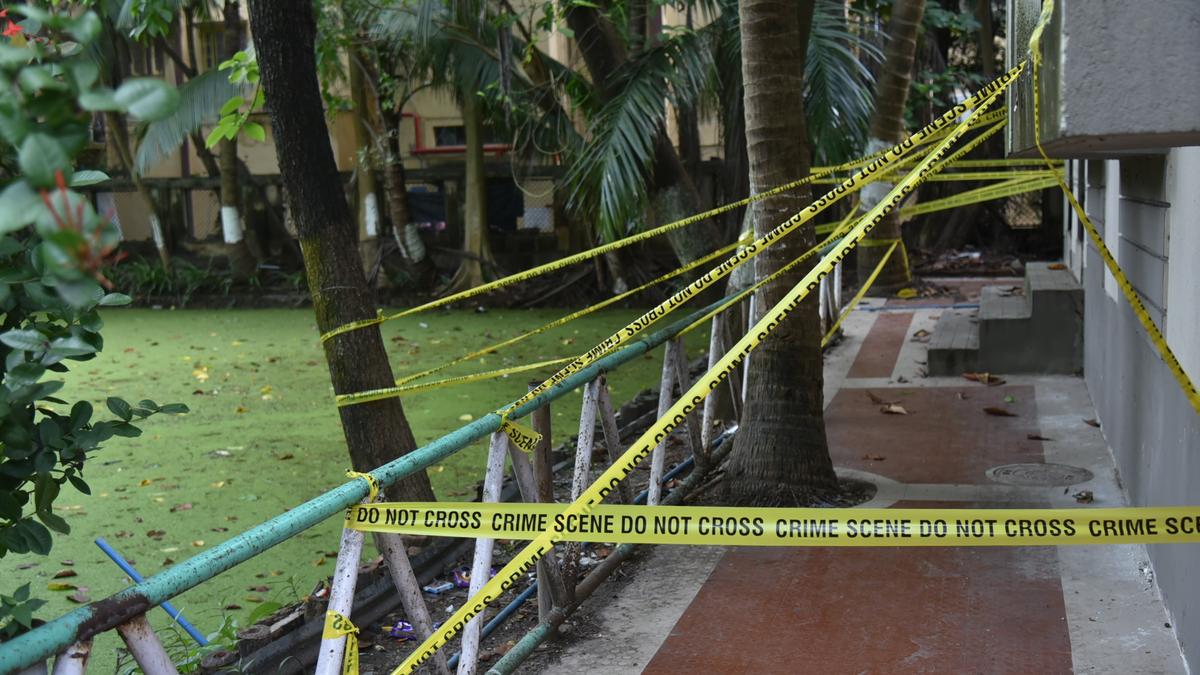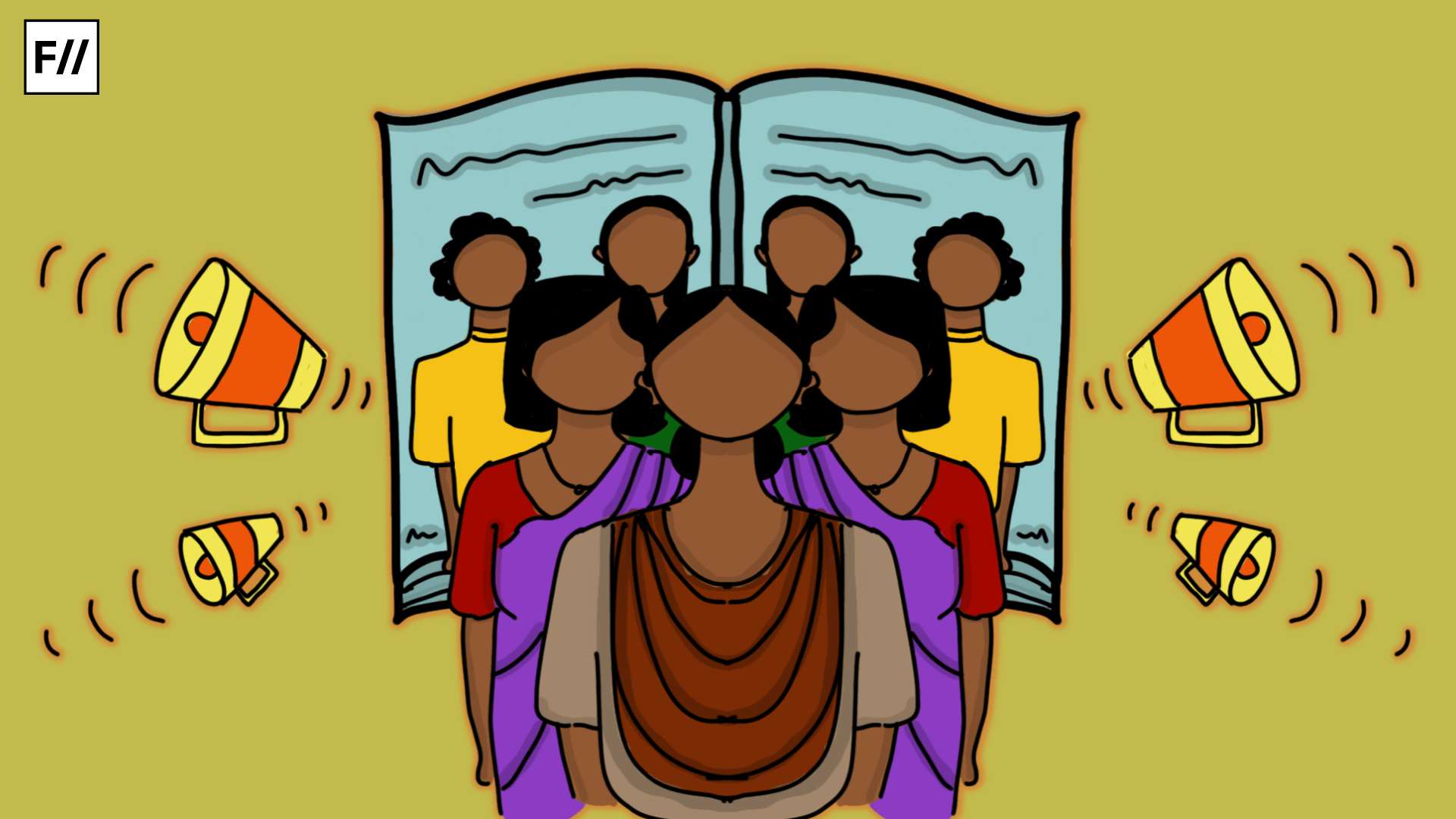 Editor’s Note: This article is a part of FII’s #GBVinMedia Campaign, which interrogates mainstream media’s reportage of gender-based violence from an intersectional feminist perspective. FII has created the #GBVinMedia toolkit as a guide for journalists and media professionals to report gender-based violence sensitively and ethically. If you wish to get in touch regarding this campaign, please email asmita@feminisminindia.com.
Editor’s Note: This article is a part of FII’s #GBVinMedia Campaign, which interrogates mainstream media’s reportage of gender-based violence from an intersectional feminist perspective. FII has created the #GBVinMedia toolkit as a guide for journalists and media professionals to report gender-based violence sensitively and ethically. If you wish to get in touch regarding this campaign, please email asmita@feminisminindia.com.Posted by Sukanya Sriraman
In August last year, Prime Minister Narendra Modi was widely praised in the media for sending out a “strong message” of “zero tolerance” for sexual violence in his monthly radio broadcast Mann ki Baat.

In his address, the Prime Minister reminded citizens that the government had made provisions for the “strictest punishment” for rapists. Referencing the Criminal Law (Amendment) Bill 2018, which was widely seen as a reaction to the media and public outcry over the rape and murder of an 8-year-old girl in Kathua, Modi noted, “Those found guilty of raping girls below the age of 12 years will be awarded the death sentence”. Indeed, the death penalty may also apply to rape cases where the victim dies or goes into a persistent vegetative state, or if the perpetrator is a repeat offender. These provisions, along with stricter rape laws in general, were also set in motion by a case that caused outrage across India — the 2012 Delhi gangrape.
WHILE CAPITAL PUNISHMENT HAS BEEN FIRMLY STATIONED IN THE NEWS BECAUSE OF HOW FREQUENTLY IT IS NOW BEING AWARDED, THE MEDIA DEBATE APPEARS TO HAVE CEASED…
Many protest marches in each case featured placards and banners demanding “death to rapists”, and that is what the government seems to be promising, at least in cases that meet certain parameters. With the steps it has taken, the government is seen in popular view as having responded to people’s anger over sexual violence in India. This view of justice being served was cemented when the death penalty was awarded (and upheld this year by the Supreme Court) to the convicts in the Delhi gangrape case.
But does the existence of the death penalty truly imply “zero tolerance” for sexual violence? How effective is it as a deterrent to crime? These questions have been asked in newspaper op-eds, expert interviews and TV panel discussions numerous times. There are passionate advocates for both sides of the debate, as represented in these Hindu and the Economic Times pieces.
Those who support the death penalty say it strikes fear in the minds of potential rapists, restores faith in a damaged system and acknowledges the gravity of child rape. Those who argue against it say international statistics (primarily from the USA) paint an unimpressive picture of its deterrent value. When it comes to rape of minor girls in the Indian context, the argument is that the death penalty may prevent victims or their families from reporting the crime since the perpetrator may be a close relative or the only breadwinner — death may be perceived as “too much” punishment.
Some believe that perpetrators may be driven to kill victims in a bid to silence them, while others criticise the “knee-jerk” nature of the legislation, alleging political expediency. There have also been many critiques of how the criminal justice system in India deals with sexual crimes (see here, here and here, for example). Several commentators have made note of the low conviction rates and have emphasised the importance of ensuring certainty of punishment rather than increased severity.
The Role Of Media Discourse
While the death penalty has been firmly stationed in the news because of how frequently it is now being awarded, the media debate appears to have ceased after the initial flurry during the passing of the legislation.Despite the preponderance of arguments against the death penalty for rape in op-eds, most news reportage tends to leave out not only opinion but context — this can be problematic.
Also read: How Can The Media Report Violence Against Women More Sensitively?
When the death sentence is awarded for rape, even detailed stories leave out any mention of the debate (for example, here). When a political leader makes headlining emotive statements such as “rapists don’t deserve to live”, there are few attempts to balance coverage with statistics or even a summary of evidence-based counter-arguments. When the matter enters into the realm of emotions of those directly affected, analysis is again put on hold. For example, when the family members of victims — such as the mother of Nirbhaya and the father of the Kathua victim — express views in favour of the death penalty as an appropriate form of retributive justice, media reports rarely provide context in the form of the larger discourse on capital punishment.
WHEN WE QUOTE A LEADER’S EFFUSIVE PRAISE FOR THE DEATH PENALTY, AND WHEN WE REPORT ON A CONVICT BEING SENTENCED TO DEATH WITHOUT ADDING CONTEXT, WE FEED INTO A POPULIST NARRATIVE THAT TREATS CAPITAL PUNISHMENT AS A MAGIC BULLET.
What the public now gets to hear, unfiltered through the lens of critical media enquiry, is what political leaders say and what courts rule. The ruling party, unsurprisingly, appears to be unequivocally convinced of the death penalty’s efficacy in reducing crimes against women and are the most outspoken on the matter. The BJP-ruled states of Madhya Pradesh, Rajasthan and Haryana were the first three to approve the death penalty for rape and have been sentencing accused rapists to death at some speed: in one MP case, the death sentence came just five days after the chargesheet was filed in court. Between March and August, four men were given capital punishment under the new law in Rajasthan. Madhya Pradesh, the most prolific awarder of the death penalty, sentenced 13 men to death between December 2017 and August 2018.
With headlines and reports focusing on such developments, it is easy to get the impression that the wheels of justice are turning, and turning fast. But are they really?
In what the Times of India has termed as the ‘Nirbhaya effect’, there has been an increase in the reporting of rape cases across India since the Delhi gangrape and the “revision of laws relating to crimes against women”. This is a positive development, and there may be several reasons for it, including the perception that crimes such as rape are being taken seriously now. However, there is little to indicate that the death penalty “scares” rapists and stops them from committing crimes. Amnesty International India’s programmes director Asmita Basu, has said, “Executions do not eradicate violence against women. There is no evidence to show that the death penalty acts as a deterrent for sexual violence or any other crime.”

Ultimately, there is no getting around the fact that the death penalty will never address India’s “rape problem”. How much does the existence of the death penalty matter when the conviction rate for crimes against women recently “hit an all-time low” of 10%, even as the incidents reported went up by 83%? We still have major leaders commenting that most rape cases are just angry women getting back at their lovers.
Also read: How Has The Media Reported The Rohtak Gang Rape Case?
In this scenario, the death penalty acts as a distractor. When we talk about the death penalty, we also need to talk about the social norms that perpetuate rape culture and the systemic failings that either silence women or victimise them further. This is where the media needs to step in. When we quote a leader’s effusive praise for the death penalty, and when we report on a convict being sentenced to death without adding context, we feed into a populist narrative that treats capital punishment as some sort of magic bullet. We do a disservice to the cause of fighting violence against women.
This article was first published by NewsTracker, part of the Media Action Against Rape project.
Featured Image Source: Ramesh Lalwani/Flickr (CC By SA2.0)
About the author(s)
Media Action Against Rape is a research and capacity building project led by Bournemouth University, UK, and UNESCO, New Delhi. A 20-month academic study, it seeks to offer news media solutions to combat rape culture. MAAR runs NewsTracker, a web site that scrutinises the representation of sexual violence in the Indian news media.




